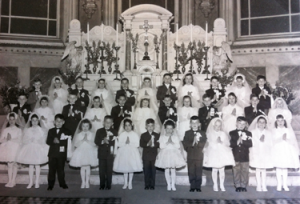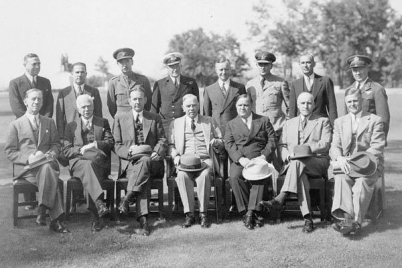Dedicated to my grandmother Maria Luisa Agostino, my great-aunt Carmela and my father-in-law Domenico Adornato who, like thousands of other Calabrese immigrants, cultivated their roots in Griffintown – “u villaggiu” – for over 50 years.
Griffintown lies by the Lachine Canal just south of Montreal’s downtown. Neglected for decades after the closing of the Canal in 1970, the area is now undergoing a rapid gentrification. In the nineteenth century Griffintown was one of Canada’s first working-class neighbourhoods, and soon an industrial slum.
Griffintown was first populated in the early 1800s by thousands of struggling Irish immigrants, arriving on “coffin ships” from across the Atlantic to escape political turmoil in Europe, and what would be termed the “potato famine.” Many would never make it past the fever sheds. In 1847-1848 a typhus epidemic broke out and about 6000 Irish immigrants died. The Black Rock Monument, erected in 1859 at the foot of the Victoria Bridge, commemorates those who died.

Irish merchant Thomas McCord was granted a 99-year lease on the land in 1791. One of his associates sold it illegally while McCord was travelling in Ireland. The buyer, Mary Griffin, began to subdivide the land, building roads and low-cost houses. Even though McCord was eventually compensated for his loss, the name Griffintown remained. Parts of the area would be referred to as Victoria Town and Goose Village.
The streets of historic Griffintown – Conway, Forfar, Britannia – that were paved in British pounds no longer exist, for the most part. But that era is not lost. Thomas’ grandson David Ross McCord, a dedicated collector of Canadian artefacts would found the McCord Museum of Canadian History, which opened its doors to the public in 1921.

Holy Communion at St Ann’s Parish, early 1960s
Waves of Italian and other Southern European immigrants would follow the Irish at the end of the nineteenth and first half of the twentieth centuries, and change the demographics and landscape of Griffintown.
By 1962, half the inhabitants of “the village” or u villaggiu, as it was affectionately called, were Italian Canadians. But in 1964, the homes of over 300 families would be expropriated and demolished to allow for the extension of the Bonaventure Expressway in preparation for Montreal’s Expo 67. In 1970, the beloved St Ann’s Parish, and later St Ann’s Academy, would also vanish from view, but never from the hearts of every loyal resident. St Gabriel’s Church is still standing, and it reminds us of all the community events we celebrated as close-knit families.
For most people, the immigrant history of Griffintown is unknown, as the area gains a reputation for luxurious condos, swanky shops and trendy dance clubs that cater to the new penthouse elites. Le Richmond Griffintown is built around an old theatre, New City Gas is not that new since the building went up in 1859, and Joe Beef’s Tavern, a favourite of foodies, was founded in 1870 with a mission to provide meals to the poor and destitute. Today, people flock to Griffintown to realize new dreams.
Maria Luisa Ierfino-Adornato is the author of McCord’s Quiet Rebellion and McCord’s Griffintown.



